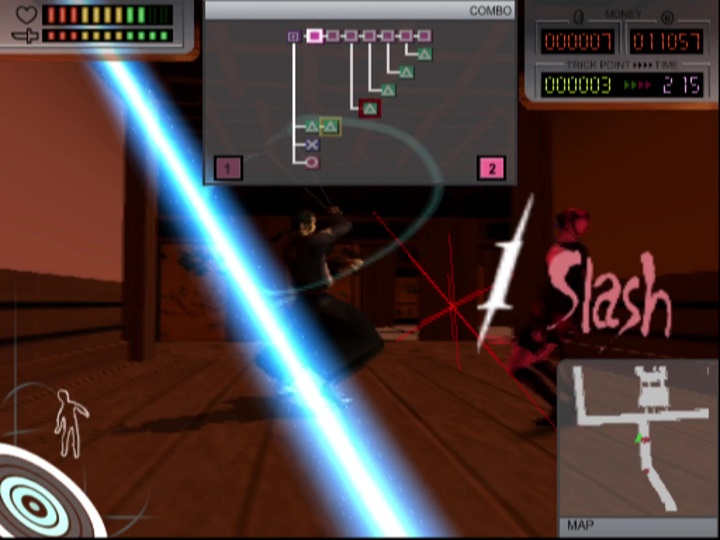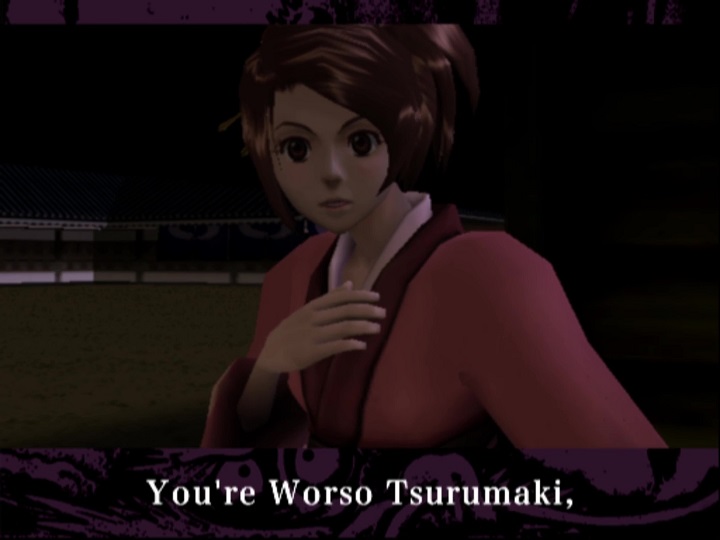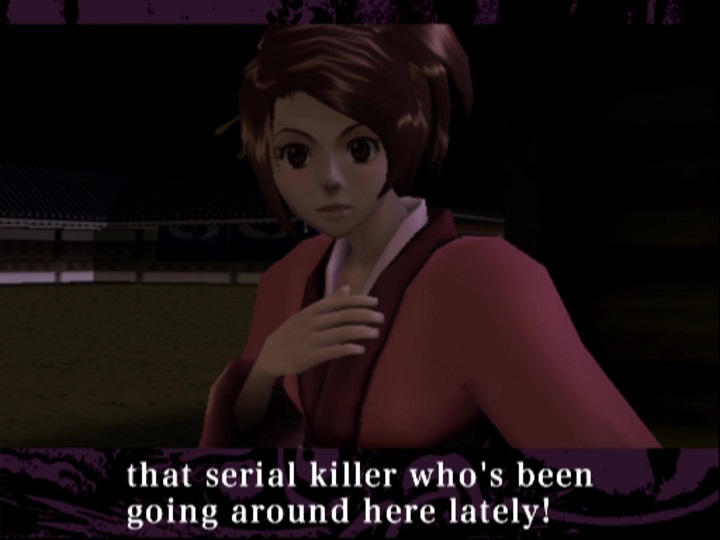The savior Kamui is a power of liberating violence not limited to any one person. For this reason, it is interesting that Worso identifies Jin, Mugen, and Fuu as “kamui” because they kill hundreds or thousands of people, the soldiers and assassins of the Matsumae oppressors. Kamui has become a literal and metaphorical spirit of liberatory change and creative destruction that “resides in us all.” So is the savior Kamui back? No. Worso’s own role complicates this narrative.

In Sidetracked, aside from Tsubaki, the player only fights the Matsumae and the Europeans (even the talking monkeys work for the Matsumae). These antagonists are presented as totally evil. The script emphasizes that the land rightfully belongs to the Tsurumaki: “Overtaken by a much wealthier regime,” the omniscient narrator says, “the natives have been pillaged, massacred and subjected to humiliation. They are on the verge of being driven from their sacred land where the souls of their ancestors dwell.” In return for money, the Matsumae give free reign to the Europeans to abduct the locals to use for sexual slavery. They betray and kill the Tsurumaki, recklessly kill civilians without a proper judicial process (as when they massacre the staff of the inn to abduct Fuu), and demand “entry permits” for the Ainu minority to move about the castle town.
In contrast, Worso stands for a progressive, pluralistic society. In “Self-Contradiction,” he tells the Matsumae guards, “This land is supposed to be open to all for people to come and go as they like.” In “Elusive: Bloody Blade,” the Kijin colonizers reject coexistence, prompting Worso to respond, “My father and the people from the old blood… …they never turned you newcomers away.” Furthermore, he explicitly and repeatedly rejects wealth accumulation in “Self-Contradiction” as a dangerous path that would make the Tsurumaki “no different from the Matsumae or the Kijin.” In the Jin chapter “Forbidden Place: Old Owl,” the Tsurumaki are explicitly identified as the “good guys” in opposition to the Matsumae “bad guys.” (Note also the reference to an owl, the owl kamuy being particularly important.) Hence, in Sidetracked, fighting the Matsumae is an uncomplicated good. Killing Antonioni carries a similar positive weight to killing Nezu, albeit with less thematic or emotional meaning due to the shallower narrative.

Worso not only venerates kamuy as spirits that dwell inside everything in the world. He is also a Kamui analogue. Although usually green, on the main menu his eyes are silver (shown above). Worso is a young man with Fujiwara’s hairstyle, kills people enough that he metaphysically transforms, and is a political terrorist repeatedly identified as a “serial killer,” so hearing him say “Oh, kamui” when choosing to retry on the game over screen carries unmistakable connotations. In “A Fierce Fight,” Worso’s behavior prompts Jin to consider that “Perhaps… [the Tsurumaki] have actually become kamui.”


As with becoming Kamui/Ayame, the change Worso undergoes is ambiguous. Though he liberates his people, he becomes an “oni,” the same kind of beast as Antonioni, prompting Jin and Mugen to discuss whether he is insane. Then, despite wiping out the oppressors and completing the great opunire, he kills himself.